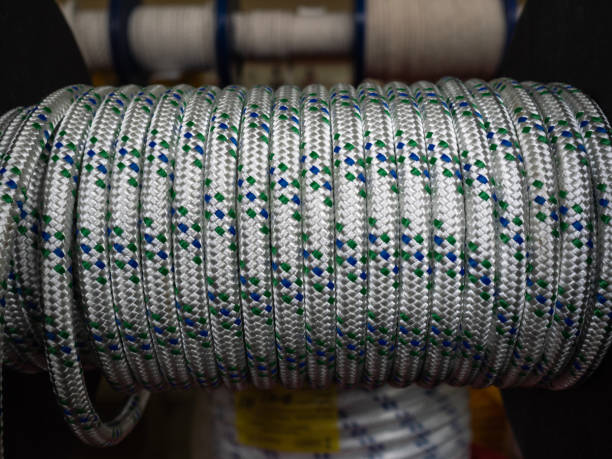This article we will look at the differences between polyamide vs nylon. We will also include the following:
What is Polyamide
What is Nylon
The advantages of both materials
Comparing direct differences
Products these materials are found in
Which is the best material for you
How we at Prototype Finder can help you
First, let us take a look at how we here at Prototype Finder can help you.
Prototype Finder is a manufacturing company. We specialize in both prototype development and prototype production. But we also have core competency in injection molding and CNC machining. We have worked with polyamide and nylon for many years. Would you like help on your next project? Do you need to know what is the best material for you? Do not hesitate to request a quote or contact us and we will help you in any way we can.
What is polyamide? Polyamide is actually a broad term that incorporates many materials under it. A material that we create when molecules of a monomer link together by amide groups. This is what we call a polyamide. We make these monomer mixtures in several combinations and categories. The most popular one being the material nylon. We can synthesize these materials or they can occur in the natural world. Some of the synthetic polymers include sodium poly, polythene, polyester and Teflon. Natural ones include wool and silk. These are most often used to make fabrics.
Polyamide refers to polymers which link by amide groups. There are many of these polymers. Including Teflon, polyester and polythene.

So what is nylon? It is also a polyamide. And one of the most popular. Created by the company DuPont back in 1927. It began its humble beginnings making toothbrush bristles. And then used to create military parachutes. Nowadays, Nylon is the all-encompassing name given to synthetic polymers made from polyamides. Nylon has very silk-like texture, and so is often used to create fabrics and fibres. Usually used for flooring, clothing and rubber reinforcements. It can even see use in molded car parts, food packaging and electrical equipment.
Nylon is a type of polyamide. In fact it is one of the most popular, known for its silk-like texture.

Before we compare the two head-to-head, let us take a look at the advantages of polyamide. The characteristics of polyamide include a high tensile strength and light weight. But also heat resistance, high flame resistance and solvent resistance. It also has an excellent dimensional stability. Comparing to other materials, polyamide is a great choice for the commercial industry.
Polyamides are very strong, light and boast a high resistance in many properties.

And what are the advantages of nylon? How does it stand out against other materials and even other polyamides? There is a reason this material became so popular. It exhibited a variety of characteristics that other materials did not hold. These include a soft texture, high melting point, durability and significant elongation. But also abrasion resistance, sunlight resistance and a compact chemical structure. What makes nylon stand out against other polyamides is the fact that we can recycle it. Unlike most polyamides which can cause adverse effects to the environment. Most of which end up dumped in landfills.
Nylon is one of the more environment friendly polyamides. Which also includes soft texture, high melting point and durability.

Let’s take a look at some of the main differences between Polyamide and Nylon below:
Definition – Remember that polyamides are a type of polymer. They have a large number of repeating units of amide groups. Nylon is a type of polyamide.
Nature – Polyamides incorporate a wide range of polymers. Some are synthetic while others are natural. Nylon is a synthetic type of polymer.
Chemical Structure – Depending on the type of amide structure, polyamide can vary. Both in symmetry and polarity. Nylon is very polar and symmetrical by comparison.
Resistance / Durability – Nylon boasts a great resistance to both moisture and rain. Polyamides in general are less resistant and a little hydrophobic.
You can find polyamide products in a wide range of materials and industries. As mentioned before, it would even include Nylon – since it is a polyamide. Let us take a look at some of the products polyamide can be in below:
Radiator header tanks in cooling systems
Switches
Connectors
Ignition components
Sensors
Motor parts in auto electrical systems
Throttle valves
Wheel trims
Engine covers
Heat resistant under-bonnet components
Airbrake tubing
Polyamide products are a great choice for commercial industries.

Let’s take a look at some of the products you can find which often use nylon:
Clothing – Stockings, windbreakers, activewear, swimwear and dresses.
Home Furnishings – Draperies and bedspreads.
Military – Combat uniforms, life vests, ropes, parachutes and tents.
Packaging – Oven bags, sausage sheaths and food packaging films.
Nylon is in various industries. From commercial clothing to military tents and parachutes.

In this article we looked at polyamide vs nylon. We took a look at what these two materials are. Explained what we here at Prototype Finder can do for you with these materials. Looked at both of their advantages. Compared the differences between them. And then we looked at the products you can find both of these most often in.
Are you looking for a professional manufacturer who can help you with your next product? Then look no further. We at Prototype Finder can help with your needs. We are an injection molding and prototype manufacturing company. Having worked with polyamide and nylon for many years. We are capable of producing both low or high volume production parts.
Does your next project include polyamide or nylon? Are you unsure which material to use for your next application? Need help from professionals with years of experience then you can contact us or request a quote.
If you liked this article then you can check out our other topics. They range from many plastics, metals and industries. Take a look at Galvanized Steel vs Aluminum to see comparisons between these two metals. Or read Aluminum Parts to see how we handle aluminum products. Or check out PTFE (Teflon) to see this incredible material. These and many more are on our Blog.
Categories: BLOG
Tags:
Leave a Reply

Recent Posts
Comparative Analysis of Titanium and Aluminum in Manufacturing Blow Molding 101: What you Must Know Prototype Fabrication: The Critical Breakdown Turning and Milling Stock: Everything you Must Know Overmolding: The Best Choice for your Next Product? CNC 101: Everything you Need to Know about this Manufacturing ProcessCategories
Comparative Analysis of Titanium and Aluminum in Manufacturing Blow Molding 101: What you Must Know Prototype Fabrication: The Critical Breakdown 3D Printing Materials: 5 Ultimate Choices Overmolding: The Best Choice for your Next Product? Galvanized Steel vs Stainless Steel: Which is the Best MetalRelated Posts